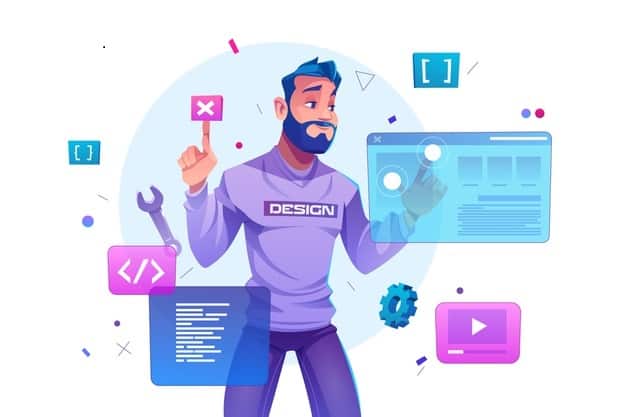In our predominantly digital world, web design is a job that is constantly in demand. So if you are weighing your options on pursuing web design, the statistics are on your side.
This article will point you in the right direction on how you can start your web design course. Of course, it will take you a few months to get well-versed in this field, and sometimes, even years to gain mastery.
If you have a genuine interest, then developing this skill can quickly become an enjoyable aspect. So open your doc file, make a note of the important points, and let’s get started.
What Are the Requirements?
If you know your way around using a computer, you are good to go. As a consumer, you might have scoured websites for academic services such as write my paper or other types of academic help as a student. You would have encountered hundreds of websites and might have been impressed by many. So you already know what the final product should look like.
We are listing the steps assuming that you have no coding skills or experience in web design. That said, make sure that you have set aside considerable time to fascinate yourself with web development and its potential.
Apart from coding, you will also have to be aware of user experience, design elements, search engine optimization, and marketing aspects. All of it might seem overwhelming, but you will know better how everything fits together.
Get Educated
It is possible to become a web designer with or without a formal education. If you want to obtain a degree, you can choose a web design or web development specialization.
However, you will find experts in web design who have a major in various subjects and self-taught web design through online programs. Majors in user experience, computer science, or even psychology, could be beneficial for web design.
The other path is to find individual online courses that will cover all the aspects. As a beginner, you can start with basic programming languages and get a basic knowledge of web development concepts and practices. Here is a list of the skills you need to acquire for web design:
- Coding proficiency in HTML, CSS, and Javascript;
- Design elements such as color theory, layouts, and typography;
- User experience design.
Start Practicing
There are two groups of web designers. One group prefers first to design the web layouts and later do the code. You can use image editors such as Photoshop, Illustrator, or Sketch to do the design.
The other group prefers a more browser-based workflow, which would give you a preview of precisely what you are designing. While using these web design tools are excellent for creation, you should always incorporate browsers for testing and implementation.
For instance, if you have interactive elements or animation, a browser-based designing approach will be a better fit. This is particularly true for responsive designs.
It is recommended that you develop the design in multiple browsers to see how it changes and adapts to different screen sizes. It will also equip you with a more thorough understanding of coding and how websites work.
Account for All Factors
It is not only crucial that you know all the tools for web design, but you should also be aware of how your users would be interacting with websites. Understand that people browse the web differently from varying devices.
You will have to weigh in factors such as how different screen brightness and sizes can affect your web design. Are all the buttons and links easy to tap on both large and small screens?
As a web designer, you also have to be responsible for developing designs for the visually impaired. Then, there is also the concern for how the designs will look on text-based browsers. While practicing web design, every time you go online or look up a website, consider how the design changes to various external factors.
Design for Sale
While your primary aim is to deliver a compelling web design, remember your client’s goal. Most likely, websites are designed to sell the content, be it commercial products or blogs. In other words, you are selling experiences.
Even if a design is appealing to you, the user should be able to navigate it easily, find attractive products, and convince the user to pursue the product. Always bear in mind that at any point you will also need to change the content. It would be best to leave room for maintenance and updates.
Content Is King
There’s a golden rule – you should design to fit the content. It shouldn’t be the other way round. You will see plenty of wireframes of web design on the internet with the typical Lorem ipsum. This will give you a fair idea of how your content will look like. However, unless you are milling out web design layouts, you should avoid this to your best.
When you take projects, request the content from your clients first. You should then design the wireframes in a way to showcase the content. This will give you a better idea of the required space and avoid bugs or other issues later. Even when you are practicing designs, collect an assortment of content, and plan your webpage around it.
Launch a Portfolio
There is no better way for a web designer to exhibit their skills other than a website. Whether you already have clients or not, if you are committed to taking up web designing as a profession, you need to have an online portfolio. You can create website mockups for the audience to browse.
Additionally, launching practice websites will also give you an overview of what could go wrong after uploading the site online. You can also get feedback to work and improve on your skills.
Wrapping Up
Web design is a never-ending learning process. At the pace, the digital world is evolving, web designs will also go through several phases and adapt to user requirements. Regardless, it is undeniably a skill worth investing in.





